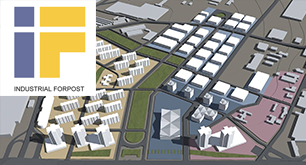 Waste management in Ukraine is a problem, as today no city carries out such waste management that would correspond to the accepted hierarchy according to European directives and provide for the disposal of a minimum of treated inert residues. Today in waste management, we are at the last step in this hierarchy and this is disposal (mostly landfill 94-96% of all household waste). However, it is also a great opportunity for Ukraine. Based on the total amount of household waste generated annually – about 10 million tons, to address the issue of treatment of these waste in Ukraine on the technology of MBT (mechanical and biological treatment) is necessary to attract about 1.8 billion US dollars from various sources. The return on such investments will be 7-8 years.
Waste management in Ukraine is a problem, as today no city carries out such waste management that would correspond to the accepted hierarchy according to European directives and provide for the disposal of a minimum of treated inert residues. Today in waste management, we are at the last step in this hierarchy and this is disposal (mostly landfill 94-96% of all household waste). However, it is also a great opportunity for Ukraine. Based on the total amount of household waste generated annually – about 10 million tons, to address the issue of treatment of these waste in Ukraine on the technology of MBT (mechanical and biological treatment) is necessary to attract about 1.8 billion US dollars from various sources. The return on such investments will be 7-8 years.
After processing 10 million tons, Ukrainian plants can offer the market about 2.5 million tons of valuable materials (glass, metals, plastics, paper) and about 4.5 million tons of alternative fuels for the needs of cement plants and Thermal power plants.
Demand for quality secondary materials in Ukraine is sufficient (today there are even imports for the processing industry).
The capacity of the cement industry to use alternative fuels is also sufficient.
In 2019, Ukraine produced about 9.1 million tons of cement. In the production of clinker, the energy component, in the form of coal, amounted to about 1.5 million tons. Given the 30% use of alternative safe renewable waste fuel (SRF) instead of coal, the need for SRF will be about 750 thousand tons per year. This need can be met by the first five pilot MBT factories near cities with a population of millions with a total processing capacity of 2.5 million tons per year (Dnipro, Kyiv, Odesa, Kharkiv, Lviv). Given the future potential of cement needs in Ukraine to 20 million tons and increasing the share of alternative fuels to 60% (the example of Poland, where cement plants burn about 1.6 million tons of alternative fuels from waste) the number of alternative fuels that can be used, will be about 3 million tons per year. The plants built in the second place after the first five pilot projects will supply the three million tons of fuel.
Systematic evolution has not yet been undone. As mentioned above, Ukraine is now similar in its waste management hierarchies. The next version is recovery except recycling (including renewable of the energy produced). We propose to invest in the introduction of MBT waste technology and energy production.
After the initial solution to the problem of solid waste treatment with more cheap and innovative MBT technologies, within 10 years, there will be a transition to waste sorting at the sites of their generation and increase the share of waste that will be recyclable and be prepared for reuse, and this is the third and second step on the European model.
In total, this will reduce the number of landfills in Ukraine and the volume of untreated waste disposal.
For reference
Waste management hierarchy – adherence to methods and management of children who minimize their production, environmentally safe management and stored in a dangerous negative place at the station, which exists in natural and human health;
The hierarchy of management carries out central and local management by executive bodies, local governments, enterprises, institutions, and organizations that have:
- Prevention preventing and reducing waste generation;
- Reuse and preparation for reuse giving the products a second life before they become waste;
- Recycle any recovery operation by which waste materials are reprocessed into products, materials or substances whether for the original or other purposes. It includes composting and it does not include incineration;
- Recovery some waste incineration based on a political non-scientific formula that upgrades the less inefficient incinerators;
- Disposal processes to dispose of waste be it landfilling, incineration, pyrolisis, gasification and other finalist solutions.

